How to Wear Men's Running Tights
If you thought running tights were only for women, then you're missing out. Many men feel nervous about trying on tights for the first time only to discover that they provide a unique level of support and comfort that shorts don't. Wearing...
Method 1 of 3:
Picking Form-Fitting Tights
-
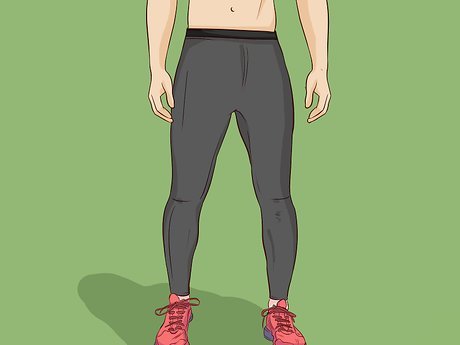 How to Wear Men's Running Tights Picture 1 Choose tights that run down to your ankles for cold-weather running. Get tights that end at or right above your ankles. If they are too short, they could leave your ankles exposed. Proper-fitting tights end where your socks begin.[1]
How to Wear Men's Running Tights Picture 1 Choose tights that run down to your ankles for cold-weather running. Get tights that end at or right above your ankles. If they are too short, they could leave your ankles exposed. Proper-fitting tights end where your socks begin.[1]- If you're going to wear long socks, try wearing shorter or slightly looser tights. Pick compression socks that fit close to your body so they don't interfere with the tights.
-
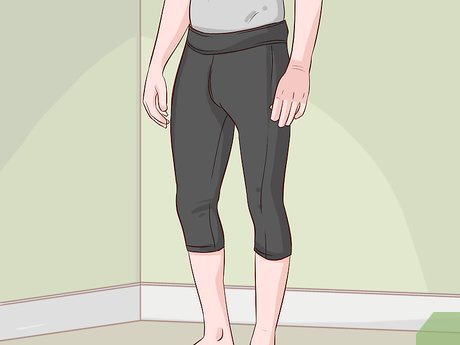 How to Wear Men's Running Tights Picture 2 Select shorter tights for warm-weather running. Tights come in a variety of styles, so you can find ones that offer a little more breathing room. Capri-style tights end at your calves and are great for staying cool in moderate weather. Switch to short-style tights when the heat is on or if you're running indoors.[2]
How to Wear Men's Running Tights Picture 2 Select shorter tights for warm-weather running. Tights come in a variety of styles, so you can find ones that offer a little more breathing room. Capri-style tights end at your calves and are great for staying cool in moderate weather. Switch to short-style tights when the heat is on or if you're running indoors.[2]- Half-tights or compression shorts can feel more comfortable for some runners. If you're using to wearing shorts while running, try using compression shorts before switching to longer tights.
-
 How to Wear Men's Running Tights Picture 3 Pick tights that feel comfortable but not restrictive. Tights are literally meant to feel like a second skin. Very restrictive tights give you no room to move or breathe. If you feel like your tights are restricting circulation in your legs, try a bigger size. On the other hand, if the tights feel loose, they won't do a good job of keeping you insulated.[3]
How to Wear Men's Running Tights Picture 3 Pick tights that feel comfortable but not restrictive. Tights are literally meant to feel like a second skin. Very restrictive tights give you no room to move or breathe. If you feel like your tights are restricting circulation in your legs, try a bigger size. On the other hand, if the tights feel loose, they won't do a good job of keeping you insulated.[3]- Above all else, comfort is the important factor to consider when wearing running tights. The length and style of your tights doesn't matter as much as feeling comfortable in them.
- Looser tights don't work effectively unless you're using them as a second layer.
-
 How to Wear Men's Running Tights Picture 4 Wear tights with an adjustable waistband to get a better fit. Most running tights have an elastic waistband so that you can fit into them without having to make adjustments. These waistbands can be very uncomfortable, so also look into tights with drawstrings at the waist. You can manually adjust them for a better fit.[4]
How to Wear Men's Running Tights Picture 4 Wear tights with an adjustable waistband to get a better fit. Most running tights have an elastic waistband so that you can fit into them without having to make adjustments. These waistbands can be very uncomfortable, so also look into tights with drawstrings at the waist. You can manually adjust them for a better fit.[4]- Many people have problems with tights rolling down at the waist. If you wear this type of tights, make sure you get something that fits you very well, but remember that the pants may not fit as well if your body shape changes over time.
- Ties keep tights nice and form-fitting. Even if the tights aren't an exact fit, you can adjust them to make them more comfortable.
-
 How to Wear Men's Running Tights Picture 5 Choose tights with a reinforced crotch if you need extra support. Since tights generally aren't meant to be work with underwear, the extra support comes in handy. The padding can ensure that your skin and muscles are well-supported with minimal movement. Reinforced tights have extra padding in the front that can also prevent the fabric from falling or bunching up, chafing, or wearing out as quickly if you have something on underneath. If regular tights feel a little thin or uncomfortable, try ones with additional padding.
How to Wear Men's Running Tights Picture 5 Choose tights with a reinforced crotch if you need extra support. Since tights generally aren't meant to be work with underwear, the extra support comes in handy. The padding can ensure that your skin and muscles are well-supported with minimal movement. Reinforced tights have extra padding in the front that can also prevent the fabric from falling or bunching up, chafing, or wearing out as quickly if you have something on underneath. If regular tights feel a little thin or uncomfortable, try ones with additional padding.- Men's tights have a different style than women's tights, so they aren't interchangeable.
- If you're planning on wearing a jockstrap or compression shorts underneath your tights, you won't need the extra padding.
-
 How to Wear Men's Running Tights Picture 6 Pick opaque tights so that your skin is well-hidden. A lot of running tights turn somewhat transparent as soon as they receive some sunlight. To avoid this problem, make sure your tights are thick with a solid coloring. Some types of thinner tights are meant to be covered up. Try taking the tights outdoors for a test run.[5]
How to Wear Men's Running Tights Picture 6 Pick opaque tights so that your skin is well-hidden. A lot of running tights turn somewhat transparent as soon as they receive some sunlight. To avoid this problem, make sure your tights are thick with a solid coloring. Some types of thinner tights are meant to be covered up. Try taking the tights outdoors for a test run.[5]- If your tights are too revealing, you can cover up with running shorts. Wear some loose-fitting shorts that match the color of your tights, for instance.
Method 2 of 3:
Dressing in Tights
-
 How to Wear Men's Running Tights Picture 7 Leave off your normal underwear when wearing tights. Since tights are meant to be skin-tight, you don't need anything underneath them. You most likely won't have room for underwear, anyway. If that leaves you feeling exposed, cover up with shorts or a long shirt instead.[6]
How to Wear Men's Running Tights Picture 7 Leave off your normal underwear when wearing tights. Since tights are meant to be skin-tight, you don't need anything underneath them. You most likely won't have room for underwear, anyway. If that leaves you feeling exposed, cover up with shorts or a long shirt instead.[6]- Even if you're able to squeeze anything under your tights, it will restrict your range of motion. It causes the fabric to bunch up and chafe your skin.
- Any underlayers you put on also stop the tights from wicking sweat off your body.
-
 How to Wear Men's Running Tights Picture 8 Wear a jockstrap underneath tights for additional support with thin tights. Although many people go tights-only, you can use a form-fitting jockstrap with running tights. Make sure the jockstrap fits you comfortably without chafing your skin. Get one made from a quick-drying, breathable material like nylon or mesh. A jockstrap is worth considering if your tights are a little loose or if you prefer having something on underneath them.[7]
How to Wear Men's Running Tights Picture 8 Wear a jockstrap underneath tights for additional support with thin tights. Although many people go tights-only, you can use a form-fitting jockstrap with running tights. Make sure the jockstrap fits you comfortably without chafing your skin. Get one made from a quick-drying, breathable material like nylon or mesh. A jockstrap is worth considering if your tights are a little loose or if you prefer having something on underneath them.[7]- Compression boxes and briefs are fine to use over strap-style jocks. They are more like normal underwear.
-
 How to Wear Men's Running Tights Picture 9 Put on the tights so they are flat against your skin. Tights go on like any other type of pants. Step into them, then pull the waistband over your waist. Make sure the fabric doesn't bunch up anywhere, such as around your ankles.[8]
How to Wear Men's Running Tights Picture 9 Put on the tights so they are flat against your skin. Tights go on like any other type of pants. Step into them, then pull the waistband over your waist. Make sure the fabric doesn't bunch up anywhere, such as around your ankles.[8]- If your tights feel a little puffy, try getting a different size. They are meant to be tight against your skin so it doesn't move at all while you're running.
- If you're wearing long tights, they will end around your ankles. If they are too loose, they will bunch up and cause problems.
-
 How to Wear Men's Running Tights Picture 10 Tie the drawstring above your hips if your tights have one. Pull the drawstring away from you to tighten the waistband. Make sure it's at a comfortable setting, loose enough to keep you comfortable without your tights falling down. Then, knot the drawstring in place so it stays there.[9]
How to Wear Men's Running Tights Picture 10 Tie the drawstring above your hips if your tights have one. Pull the drawstring away from you to tighten the waistband. Make sure it's at a comfortable setting, loose enough to keep you comfortable without your tights falling down. Then, knot the drawstring in place so it stays there.[9]- If you don't have a drawstring, keep the waistband above your hip bones. If you notice it rolling down, your tights may be too loose.
-
 How to Wear Men's Running Tights Picture 11 Wear compression socks below your tights. Socks aren't meant to go underneath tights. Since you don't have a lot of space to work with, especially with long tights, get socks that fit you well. Choose ankle-high socks so that your ankles are covered. Compression socks typically fit well and keep your feet dry, so they are the ideal choice if you have them.[10]
How to Wear Men's Running Tights Picture 11 Wear compression socks below your tights. Socks aren't meant to go underneath tights. Since you don't have a lot of space to work with, especially with long tights, get socks that fit you well. Choose ankle-high socks so that your ankles are covered. Compression socks typically fit well and keep your feet dry, so they are the ideal choice if you have them.[10]- Regular socks are also fine for the most part, but choose a fast-drying material like polyester instead of cotton.
- Pay attention to the length of your socks. If your socks are the wrong size, they could leave your skin exposed. Longer socks and stockings are safe to use with shorter tights.
-
 How to Wear Men's Running Tights Picture 12 Wear shorts over your tights if you wish to cover up. Many well-known athletes choose to wear shorts over tights. The main advantage is to avoid feeling too exposed in public. However, there are other benefits, like having an extra layer of warmth in the winter. The extra layer also gives you more pocket space to store whatever you happen to carry with you on your runs.
How to Wear Men's Running Tights Picture 12 Wear shorts over your tights if you wish to cover up. Many well-known athletes choose to wear shorts over tights. The main advantage is to avoid feeling too exposed in public. However, there are other benefits, like having an extra layer of warmth in the winter. The extra layer also gives you more pocket space to store whatever you happen to carry with you on your runs.- Running tights are very tight and can make you feel self-conscious. With shorts on, you don't have to worry about changing you decide to go to a public spot right after running.[11]
- Wear shorts with caution in the summer. The extra insulation could leave you sweaty and overheated.
-
 How to Wear Men's Running Tights Picture 13 Put on a long T-shirt or a scoop hem shirt for an alternative cover-up. If shorts aren't an option, a good shirt can help. Select something with a little extra length to cover your crotch. You won't have to feel exposed while running. In addition, running shirts work well no matter what conditions you face on your run.
How to Wear Men's Running Tights Picture 13 Put on a long T-shirt or a scoop hem shirt for an alternative cover-up. If shorts aren't an option, a good shirt can help. Select something with a little extra length to cover your crotch. You won't have to feel exposed while running. In addition, running shirts work well no matter what conditions you face on your run.- For maximum comfort, select shirts made with a fast-drying material like polyester. Cotton retains water, so it can be very uncomfortable on long runs.
- If you don't need to cover up, you could get a compression shirt instead. Compression shirts act like tights, keeping your body well-supported and dry.
-
 How to Wear Men's Running Tights Picture 14 Get a second pair of running tights for additional warmth. Double up your layers to tackle cold weather. Put on your skin-tight running tights as you normally would, then top them with a slightly looser pair. Make sure the second pair fits you well so the fabric doesn't bunch up or otherwise get in your way. Jog around to ensure that you feel comfortable.[12]
How to Wear Men's Running Tights Picture 14 Get a second pair of running tights for additional warmth. Double up your layers to tackle cold weather. Put on your skin-tight running tights as you normally would, then top them with a slightly looser pair. Make sure the second pair fits you well so the fabric doesn't bunch up or otherwise get in your way. Jog around to ensure that you feel comfortable.[12]- Extra tights aren't helpful in warm conditions. Wear shorts or a longer shirt instead if you need to cover up.
- Many people can run in cold weather without wearing additional tights. It depends on how warm the tights are. Remember that you also warm up as you run, so you won't feel as cold as you do when first stepping outside.
Method 3 of 3:
Choosing Tights with Additional Features
-
 How to Wear Men's Running Tights Picture 15 Pick tights with thermal protection if you run in the cold. Some types of tights come with additional protection for extreme cold. If you live in a place with harsh winters, thermal tights allow you to run year-round. Thermal tights are often thicker than regular tights because they include insulation. Some versions have fleece on the inside, for instance.[13]
How to Wear Men's Running Tights Picture 15 Pick tights with thermal protection if you run in the cold. Some types of tights come with additional protection for extreme cold. If you live in a place with harsh winters, thermal tights allow you to run year-round. Thermal tights are often thicker than regular tights because they include insulation. Some versions have fleece on the inside, for instance.[13]- Regular tights keep you pretty warm and are more versatile than thermal tights. If you plan on trying out regular tights in the cold, wear full-length ones with a suitable pair of socks.
- Thermal tights will always be full-length and well-insulated.
-
 How to Wear Men's Running Tights Picture 16 Wear tights with mesh panels to stay dry during a run. Although tights keep your body warm, they also wick moisture off your skin. To help with this, many manufacturers make vented tights out of lightweight materials like mesh. The vents are often positioned behind your knees, but they can also be located on the sides of your legs. The vents provide better air circulation so you stay cool and dry.[14]
How to Wear Men's Running Tights Picture 16 Wear tights with mesh panels to stay dry during a run. Although tights keep your body warm, they also wick moisture off your skin. To help with this, many manufacturers make vented tights out of lightweight materials like mesh. The vents are often positioned behind your knees, but they can also be located on the sides of your legs. The vents provide better air circulation so you stay cool and dry.[14]- Ventilation panels are easy to spot on most tights, but they don't expose more skin. They are still opaque.
- Ventilation panels may not be as comfortable to wear at first in the cold due to the extra air circulation. However, they are still good for disposing of sweat that could make you feel colder over time.
-
 How to Wear Men's Running Tights Picture 17 Get tights with reflective patterns if you run in the dark. If you're a frequent runner, you may be used to getting up at sunrise or going out at sunset. Reflective tights keep you safe when visibility is low. Some tights have stripes along the legs that glow when exposed to light, such as from a car's headlights. Others have the reflective material blended in so they look like regular tights.[15]
How to Wear Men's Running Tights Picture 17 Get tights with reflective patterns if you run in the dark. If you're a frequent runner, you may be used to getting up at sunrise or going out at sunset. Reflective tights keep you safe when visibility is low. Some tights have stripes along the legs that glow when exposed to light, such as from a car's headlights. Others have the reflective material blended in so they look like regular tights.[15]- Always wear reflective tights when going out in the dark. Assume that other people won't be able to see you. Leave your regular tights at home.
- You could also wear a reflective shirt or other gear to make yourself more conspicuous.
-
 How to Wear Men's Running Tights Picture 18 Choose tights with zippered pockets for secure storage. Most tights have pockets that go deep into the fabric. Unless you have nothing to carry, quality pockets make a big difference. You will most likely bring your phone, house keys, or something else with you while you run. Make sure you have adequate storage space and security for your belongings.[16]
How to Wear Men's Running Tights Picture 18 Choose tights with zippered pockets for secure storage. Most tights have pockets that go deep into the fabric. Unless you have nothing to carry, quality pockets make a big difference. You will most likely bring your phone, house keys, or something else with you while you run. Make sure you have adequate storage space and security for your belongings.[16]- Tights with zippers provide a little extra protection against losing anything during a run. Some people may not like dealing with zippers while running, however.
- Storage space is often limited with running tights. Wearing shorts helps, but shorts can feel uncomfortable. Pick your tights carefully to match the amount of storage space you need.
4 ★ | 2 Vote
You should read it
- How to Research a Topic
- How to Cite a Blog in APA
- How to Quote in a Research Paper
- How to Conduct Academic Research
- How to Do Qualitative Research
- New scientific discovery: Jogging may not be good for health
- How to Get Good Song Ideas
- How to Publish a Research Paper
- How to Turn Split Screen On and Off on iPad
- How to Cite Videos
- ReactOS - 'an unauthorized copy of the Windows Research Kernel'
- How to Buy a Bicycle
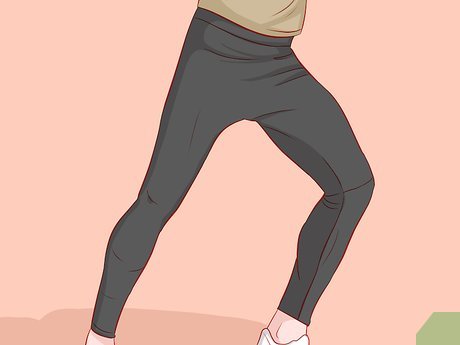
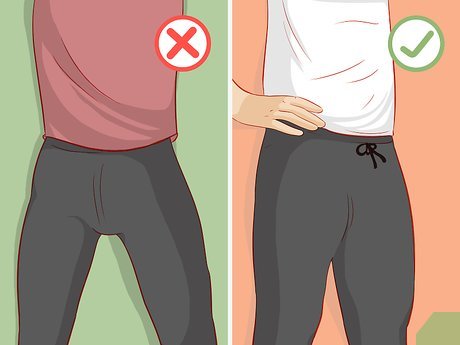
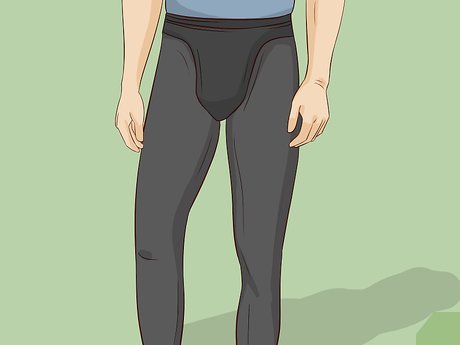
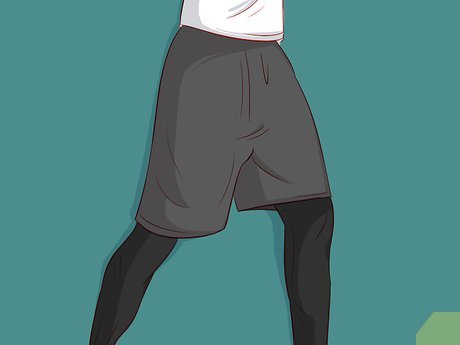
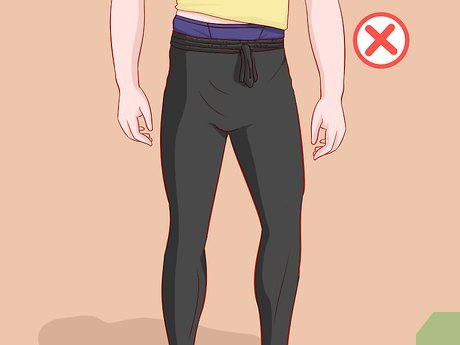
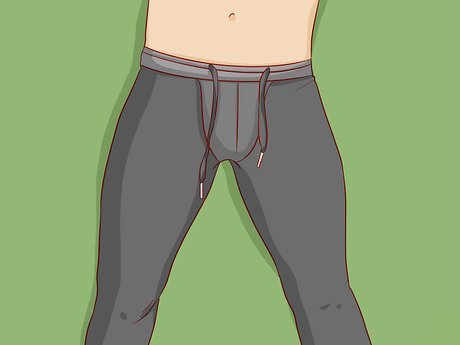
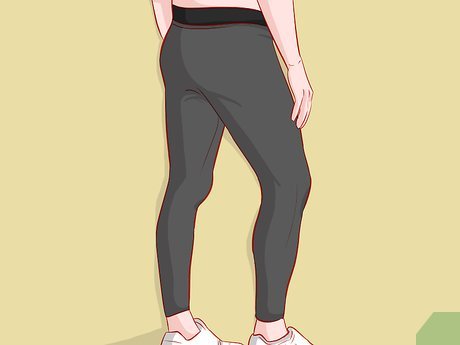
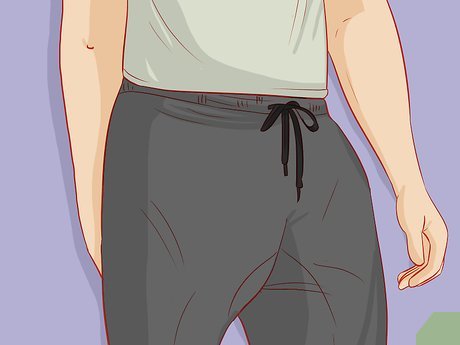
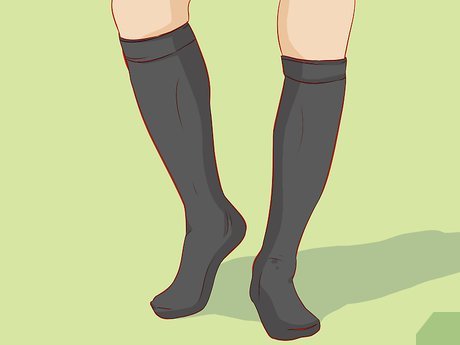
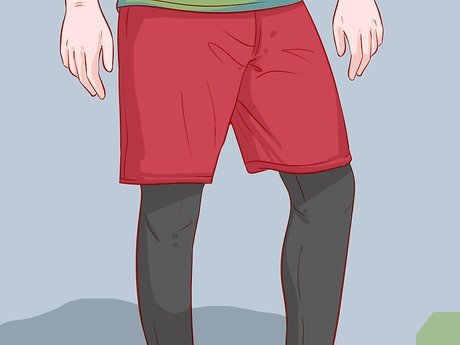
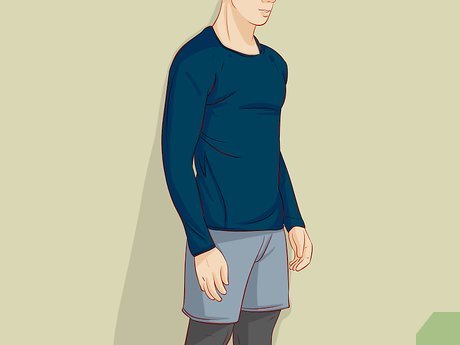
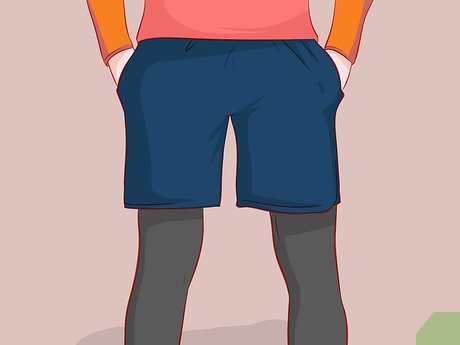
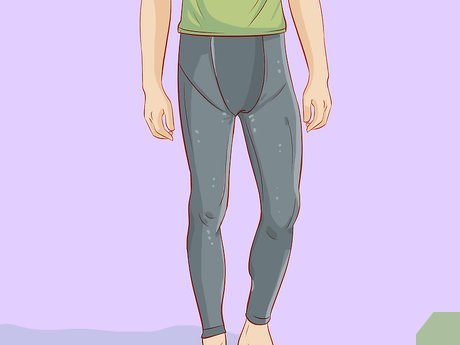
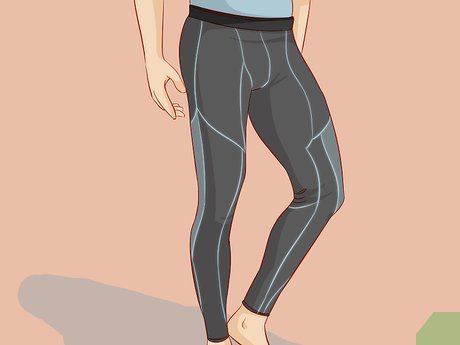
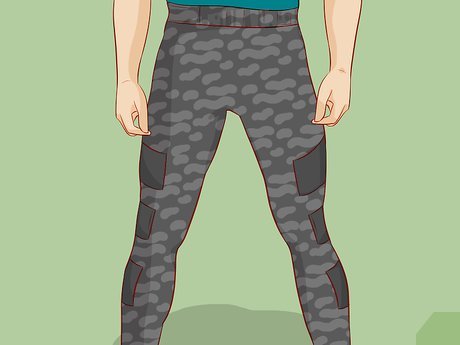
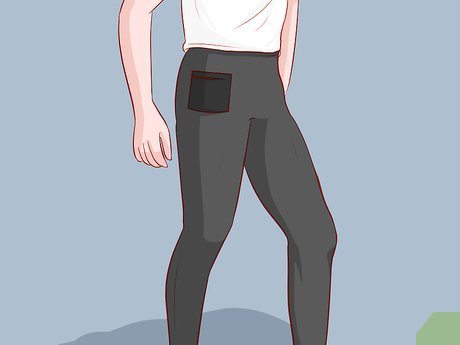






 Google launched new promotional videos on Android Wear
Google launched new promotional videos on Android Wear Only 1/4 of devices running Android support Android Wear
Only 1/4 of devices running Android support Android Wear 5 dresses should not wear to the wedding
5 dresses should not wear to the wedding What happens to your body if you wear a bra every day?
What happens to your body if you wear a bra every day? Google unveiled some new features of Android Lollipop Wear for smartwatch
Google unveiled some new features of Android Lollipop Wear for smartwatch 11 new features of Android Wear 2.0 version of Android smart watch
11 new features of Android Wear 2.0 version of Android smart watch